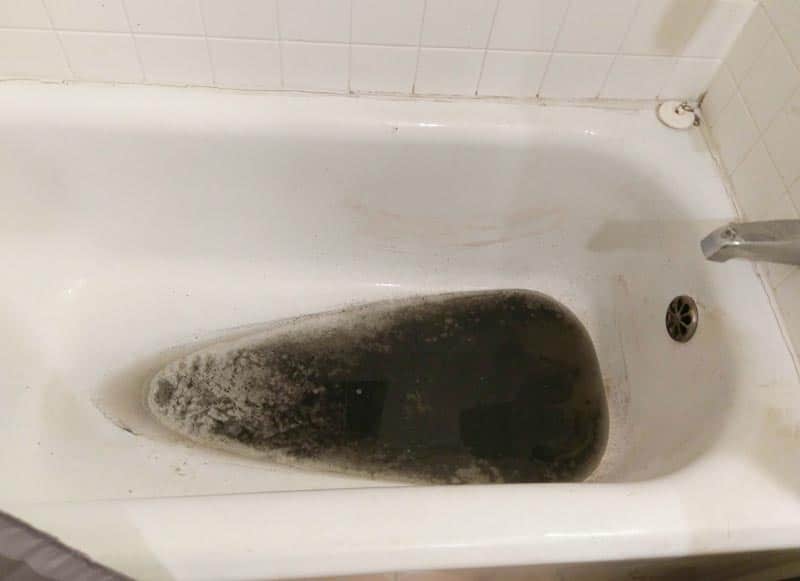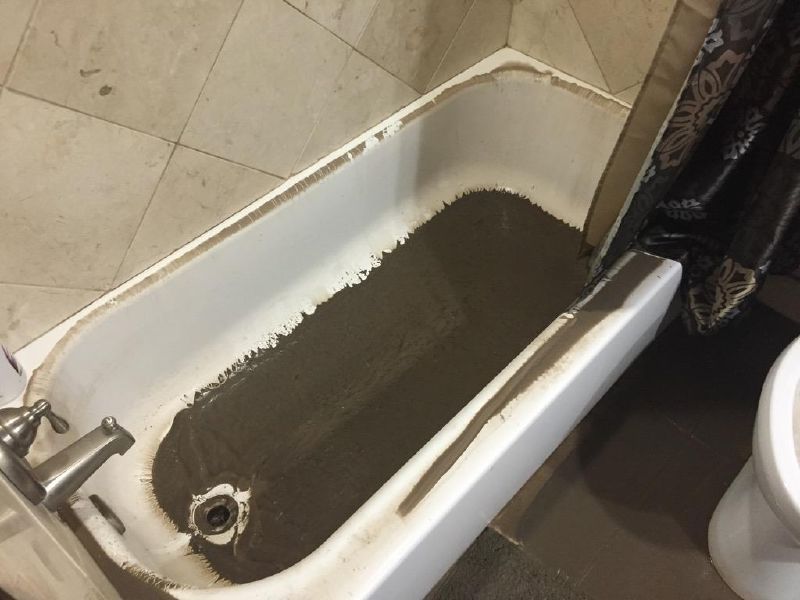Essential Explanations for Sewage in the Bathtub
Essential Explanations for Sewage in the Bathtub
Blog Article
The publisher is making a number of great pointers related to Why is There Sewage Coming Up Through the Bathtub in general in this article below.

Sewage back-up in the bath tub can be a stressful and unhygienic problem for any type of homeowner. Not just is it troublesome, yet it additionally presents severe health threats and shows underlying problems with the plumbing system. Understanding why sewage is coming up via the bath tub is critical for taking suitable action to deal with the issue effectively.
Intro to the Concern
Usual Reasons for Sewer Back-up
Blockages in the Sewer Line
One of one of the most common reasons for sewer back-up is a clog in the sewage system line. This can occur due to the buildup of debris, grease, or international objects in the pipelines, protecting against appropriate circulation and causing sewage to back up right into your bath tub.
Tree Root Intrusion
Tree roots seeking wetness and nutrients can infiltrate sewage system lines via little cracks or joints. In time, these origins can expand and expand, triggering substantial damages to the pipelines and causing sewer backup issues.
Recognizing the Issue
When sewage draws back up right into the bath tub, it's a clear sign of a trouble with the water drainage system. The wastewater that ought to be moving away from your home is rather finding its way back into your home, which can result in significant damage and carcinogen.
Possible Causes
Several aspects can contribute to sewage backup in the bath tub. From clogs in the drain line to concerns with the plumbing framework, identifying the origin is essential for finding a service.
Aging Facilities
Older homes might have outdated plumbing systems that are extra susceptible to deterioration, fractures, and wear and tear. As pipes age, they come to be more prone to leakages and obstructions, increasing the chance of sewage back-up occurrences.
Heavy Rainfall or Flooding
During periods of heavy rainfall or flooding, the sewer system may come to be overloaded with excess water, triggering back-ups and overflows. This can result in sewage supporting into bathtubs and various other components inside the home.
Indications of Sewer Backup
Foul Odors
Unpleasant odors rising from drains pipes or components, specifically in the restroom, may indicate sewer back-up issues. These odors are usually solid and consistent, signaling a trouble that calls for immediate attention.
Slow Draining Fixtures
Bath tubs, sinks, and toilets that drain slowly or not in any way could be experiencing sewer backup. If numerous components are influenced at the same time, it's most likely that the concern stems from a typical factor, such as the primary sewage system line.
Gurgling Noises
Odd gurgling or bubbling sounds originating from drains when water is running somewhere else in your house are indicative of air trapped in the plumbing system. This air buildup can result from sewer backup and must be investigated without delay.
Wellness Threats Related To Sewage Backup
Contamination of Water Supply
Sewer back-up can contaminate the supply of water in your home, positioning a major health and wellness threat to you and your family. Direct exposure to infected water can cause stomach concerns, skin infections, and various other illnesses.
Mold Development
Dampness from sewer backup can produce suitable problems for mold growth in your house. Mold spores can exacerbate breathing troubles and cause allergies in delicate individuals, making prompt clean-up important.
Spread of Illness
Sewer includes unsafe microorganisms, viruses, and bloodsuckers that can trigger a variety of conditions, including hepatitis, cholera, and gastroenteritis. Entering contact with sewer or infected surface areas puts you at risk of infection.
Tidying up After Sewage Backup
Disinfection Procedures
Completely decontaminate and sanitize affected areas after sewage back-up to get rid of damaging bacteria and stop mold and mildew growth. Usage suitable cleansing items and safety gear to ensure risk-free and efficient clean-up.
Remediation of Influenced Areas
Fix any damage to floor covering, wall surfaces, or fixtures triggered by sewage backup. Depending on the degree of the damage, you may need to change carpeting, drywall, or other products to restore your home to its pre-loss problem.
Immediate Actions to Take
Turning Off Water Supply
In case of sewage back-up, it's necessary to turn off the water system to avoid more contamination and damages. Find the main water shutoff valve in your house and shut it off until the problem can be dealt with.
Contacting an Expert Plumber
Managing sewage back-up is not a do it yourself task. Get in touch with a qualified plumber with experience in managing sewage-related issues to examine the scenario and perform essential repair work or cleanups.
Avoiding Contact with Polluted Water
Until the sewer backup is dealt with, prevent contact with polluted water to prevent the spread of germs and microorganisms. Wear safety equipment if you need to remain in the damaged area and clean your hands completely later.
Preventive Measures
Normal Upkeep of Sewage System Lines
Schedule normal examinations and maintenance of your sewer lines to identify and deal with prospective issues before they intensify right into significant troubles. This can include cleaning out particles, examining for tree root breach, and fixing any type of broken pipelines.
Mounting Bayou Shutoffs
Consider setting up bayou valves in your plumbing system to stop sewer from flowing back into your home during durations of heavy rainfall or flooding. These shutoffs immediately close when water starts backing up, safeguarding your residential property from contamination.
Correct Disposal of Home Waste
Avoid flushing anything aside from toilet paper and human waste down the toilet to stop obstructions and clogs in the drain line. Dispose of oil, oil, and other house chemicals correctly to decrease the risk of plumbing issues.
Why Is Water Backing Up in My Bathtub When I Flush My Toilet?
What to do about a sewer line clog
First, don’t bother with plunging. No amount of plunging will dislodge the clog in a sewer line. The clog is too far away. Plungers are for clogs in the toilet itself, not the sewer line. Plus, the most likely causes of a sewer clog are:
Tree roots Flushed toys or feminine products Grease buildup Those items don’t move easily. And in the case of tree roots, the roots need to be cut out of the pipe and the pipe will need to be repaired.
You’ll need a closet auger. A closet auger is a type of plumber’s snake with a protective cover to keep from scratching the delicate porcelain toilet. If the clog is further down, you may need to remove the toilet or use one of your cleanouts to get to the clog.
We also recommend doing a video inspection of the drain to ensure that the cause of the clog has been completely removed. Otherwise, you could have the same problem again in a few days or weeks.
https://mspplumbingheatingair.com/blog/why-is-water-backing-up-in-my-bathtub-when-i-flush-my-toilet

I came across that blog post about while looking around the search engines. Those who appreciated our post kindly remember to share it. We enjoy reading our article about What to Do if Sewage Starts Coming Up Through Your Bathtub.
Call Today
Report this page